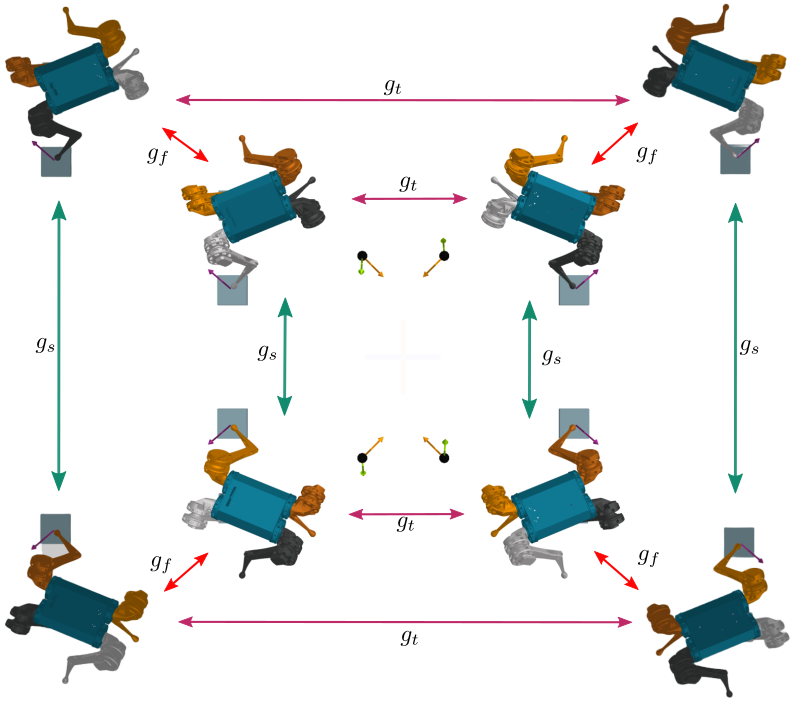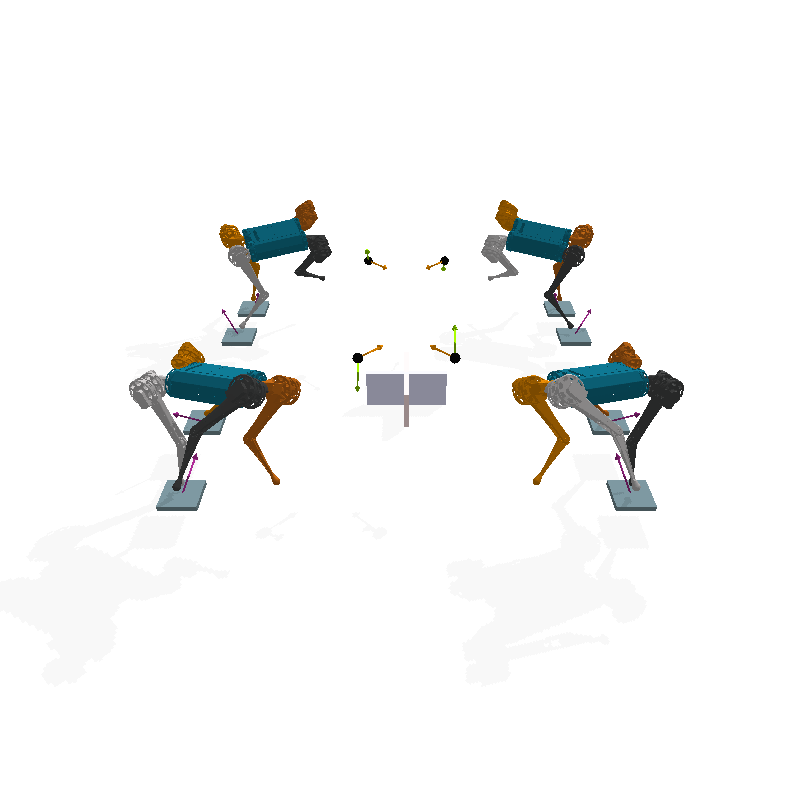Decomposing motions as superposition of simpler motions



Abstract Harmonics Analysis
Additionally, the symmetries of a robotic system allow us to decompose any motion as a superposition of simpler symetric synergistic motions, each evoling in a lower-dimensional space, called isotypic subspace. By projecting entire motion's trajectories into these spaces, we can characterize each motion as the superposition of lower-dimensional and synergistic motions.


This decomposition is achieved by applying the appropiate change of basis to the state space of our system. With the use of abstract harmonic analysis, we can analytically compute this change of basis and apply it globally for any symmetric robotic system.
For instance, the following is a decomposition of recorded motion trajectories from the mini-cheetah quadruped robot featuring different gait types and terrains:
Trotting gait
In forest


In grass


In concrete


Jumping gait
In concrete


Pronking gait
In concrete


Galloping gait
In concrete

